What’s Up?
I am hoping that everyone is staying safe and in good health.
As seemed likely, the Georgia Nature Photographers Association Annual Expo Conference at Villas by The Sea Resort & Conference Center, Jekyll Island, GA has been canceled.
I am heading over to Fort DeSoto today for two days of photography and following that up with three days on the Hooptie Deux for spoonbills and more.
Please Take a Moment …
Please take a moment and let us know your choices for the two strongest images and the two weakest images along with your reasons. All it all, it turned out to be a pretty productive day at Gatorland.
From Fred Innamorato via e-mail
Hi Artie,
I want to thank you for making the Sony e-Guide and videos available and for the work you put into the blog as well as for your books that teach us how to photograph birds and also for your camera User’s Guides. There is just no possible way I would have been able to get my Sony a9 ii camera settings so technically correct for doing birds in flight on my own without this guide. in my opinion, Sony should pay you for taking on the task of educating their customers. Sony has created an amazing camera but they fail to explain to their customers how to take full advantage of it. I appreciate that you know and have access to some very competent people with the technical backgrounds to assist you in your field experimentation to come up with the best and most practical and useful Menu Settings for bird photography. We all will benefit from your unique ability to pull this together. I am especially happy with your instructions on how to use the Zebra Settings for getting proper exposures. I really can’t thank you enough Artie for making my bird photography hobby so much more enjoyable than it would have been otherwise. My photography brings me great satisfaction. Sharing quality photographs with my family and friends has generated lots of interest in my hobby and why I do it. Life is good!
I highly recommend the purchase of your Sony e-Guide and Video(s). This information is just not available anywhere else. Even from Sony …
Fred Innamorato
The Sony Camera Videos and Pre-publication e-Guide Costs and Discount Info
The cost of the SONY e-Guide is $100.00 US and will include one of the camera set-up videos — we offer one video each for the a7r iii, the a7r iv, the a9, and the a9 ii — and the written guide with the galleries. The guide is now 98% done and you will — of course, receive the final version when it is completed. I sent out the third draft today to those who have purchased the Guide with or without the discount.
Folks who have used my B&H links or purchased their SONY gear from Bedfords will receive said discount based exactly on how much they spent. If you spent more than $10,000 you will receive one free video and the e-Guide. Additional camera videos are $25.00 each. If you spent $2400, you will receive a 24% discount, and so on and so forth. And again, additional camera videos will be $25.00 each.
I will need time to verify your B&H purchases so folks will need to send their receipts and then be a bit patient. It is much easier to verify Bedfords’ purchases but I need those receipts as well.
If you have not used BAA links, please do so in the future. If that is the case and you would like the e-Guide now, please send a Paypal for $100 US to birdsasart@verizon.net and be sure to include the words “SONY Pre-publication Guide” in the Paypal e-mail along with the name of your camera or cameras so that you can receive the correct video or videos. Please add $25 for each additional camera video. Be sure to send a copy of the Paypal transaction to me via e-mail.
Folks who have used BAA links to purchase their SONY gear should send their receipts to me via e-mail asap and let me know which camera videos they need. I will verify their purchases as quickly as possible and send a quote to be paid via Paypal as above.
Thanks to all who have properly used my B&H links or gone through the fabulous Steve Elkins at Bedfords, and thanks to everyone for having faith in the information that I provide, knowing that it will be the best available anywhere.
IPT Udpates
You can access the full listings and all IPT details here.
- The 2020 Fort DeSoto Spring Sandbar Secrets IPT/April 22 through the morning session on April 25, 2020. 3 1/2 DAYS: $1499.00. Limit 8/Openings: 6.
- IPT #1: SAT 20 FEB 2021 through the full day on THURS 25 FEB MAR 1, 2021. Six full days: $5499.00. Limit 5 photographers/Openings: 4.
- IPT #2: SAT 27 FEB 2021 through the full day on WED 3 MAR 2021. Five full days: $4599.00. Limit 5 photographers/Openings: 4
- The 2020 Hooptie Deux/Roseate Spoonbill Boat 3 1/2 DAY IPT — MAR 19 thru the morning session 22 MAR 2020: $2599.00. Sold out.
- The GALAPAGOS Photo Cruise of a Lifetime IPT/The Complete Galapagos Archipelago Photographic Experience. August 17-31, 2021 on the boat. 13 FULL and two half-days of photography: $14,999.00. Limit: 12 photographers/Openings: 5.
The Greatest-ever Bald Eagle Experience IPTs:
BIRDS AS ART
BIRDS AS ART is registered in the U.S. Patent and Trademark Office.
Money Saving Reminder
If you need a hot photo item that is out of stock at B&H, would enjoy free overnight shipping, and would like a $50 discount on your first purchase over $1000.00, click here to order and enter the coupon code BIRDSASART at checkout. If you are looking to strike a deal on Canon or Nikon gear (including the big telephotos) or on a multiple item order, contact Steve Elkins via e-mail or on his cell at (479) 381-2592 (Eastern time) and be sure to mention your BIRDSASART coupon code and use it for your online order. Steve has been great at getting folks the hot items that are out of stock at B&H. Those include the SONY a7r IV, the SONY 200-600, the SONY 600mm f/4 GM, and the Nikon 500mm PF. Steve is eager to please.


Gear Questions and Advice
Too many folks attending BAA IPTs and dozens of photographers whom I see in the field and on BPN, are–out of ignorance–using the wrong gear especially when it comes to tripods and more especially, tripod heads… Please know that I am always glad to answer your gear questions via e-mail. Those questions might deal with systems, camera bodies, accessories, and/or lens choices and decisions.
|
|
|
This image was created on March 14, 2020 at Gatorland. I used the Induro GIT 304L/FlexShooter Pro-mounted Sony FE 600mm f/4 GM OSS lens, the Sony FE 1.4x teleconverter, and the the 61-MP monster, the Sony Alpha a7R IV Mirrorless Digital Camera Body. ISO 400. Exposure determined by Zebras with ISO on the rear dial: 1/2500 sec. at f/6.3 in Manual mode. AWB at 7:59am on a then partly cloudy in the east morning. Tracking Flexible Spot (M) AF-C. Click on the image to see a larger version. Image #1: Anhinga dawn silhouette |
Better Late …
I was late leaving ILE and got to watch a spectacular eastern sky from seven to seven-fifteen am :). For those with a Photographer’s Pass, Gatorland opens at 7:00am. I arrived at about 7:30 🙁 But with a few clouds on the eastern horizon, I managed a single nice silhouette.
With the number of nests down 90% and the number of birds down even more, it took some effort to find a few decent situations in these worst of times. Me-thinks that I did OK.
|
|
|
This image was also created on March 14, 2020 at Gatorland. Again I used the Induro GIT 304L/FlexShooter Pro-mounted Sony FE 600mm f/4 GM OSS lens, the Sony FE 1.4x teleconverter, and the the 61-MP monster, the Sony Alpha a7R IV Mirrorless Digital Camera Body. ISO 400. Exposure determined by Zebras with ISO on the rear dial: 1/320 sec. at f/5.6 in Manual mode. AWB at 8:08am on a then sunny morning. Tracking Zone AF-C. The point of sharpest focus is on the spot where the forehead meets the base of the upper mandible. Click on the image to see a larger version. Image #2: Tricolored Heron displaying |
Spiffy
On my walk-in, I noted several quite spiffy Tricolored Herons. I was lucky to find one in a decent spot with a decent background and began by creating some nice horizontal head portraits. When the bird began displaying, I went to vertical, clipped the crest on the first two, re-composed and got two with the bird’s bill pointing straight up but turned slightly away. As it ended the display and began to lower its head I got lucky as the bird turned its head toward me. Image #2 waas th result of my good fortune.
|
|
|
This image was also created on March 14, 2020 at Gatorland. I used the handheld Sony FE 200-600mm f/5.6-6.3 G OSS lens (at 565mm) with the blazingly fast AF King, the Sony Alpha a9 II Mirrorless Digital camera body. ISO 800. Exposure determined by Zebras with ISO on the rear wheel (I went with lots of Zebras on the backlit white crest): 1/640 sec. at f/6.3 in Manual mode. AWB at 8:49am on a sunny morning. Tracking Flexible Spot (M) AF-C performed perfectly. Click on the image to enjoy a larger version. Image #3: Tricolored Heron backlit |
Backlit
With very few front-lit subjects on the west side of the Swamp Boardwalk, I began searching for backlit subjects and was lucky to find two nice ones, this tricolored and the Great Egret immediately below. The trick with backlit subjects is generally to be able to come up with a dark background; sky backgrounds for strongly backlit subjects. For both images, one of the great tips from The BAA Middle of Florida Photographic Site Guide enabled me to do just that.
|
|
|
This image was created on March 14, 2020 at Gatorland. I used the handheld Sony FE 200-600mm f/5.6-6.3 G OSS lens (at 600mm) with the blazingly fast AF King, the Sony Alpha a9 II Mirrorless Digital camera body. ISO 800. Exposure determined by Zebras with ISO on the rear wheel (I went with lots of Zebras on the brightest sunlit WHITEs): 1/1000 sec. at f/6.3 in Manual mode. AWB at 8:52am on a sunny morning. Tracking Flexible Spot (M) AF-C performed perfectly. Click on the image to enjoy a larger version. Image #4: Great Egret backlit preening
|
Flash for Backlit Subjects
In the process of creating the two backlit images here, I realized that using flash at zero or +1 in such situations is a big plus. You can lowerr the ambient exposure while allowing the flash to light the shaded side of the subject. In addition, it is much easier to come up with a pleasing and natural color balance. Doing that with Image # 3 required lots of fancy stepping during post-processing.
Exposure Question
Why did I aim to over-expose the brightest highlights in Images #3 and #4?
|
|
|
This image was also created on March 14, 2020 at Gatorland. I used the handheld Sony FE 100-400mm f/4.5-5.6 GM OSS lens (at 400mm) with the 61MP monster, the Sony Alpha a7R IV Mirrorless Digital camera body ISO 1600. Exposure determined by Zebras with ISO on the rear wheel (I went with faint Zebras on the highlights): 1/125 sec. at f/16 in Manual mode. AWB at 9:09am in the shade of a shelter a sunny morning. Flexible Spot (S) AF-C. Click on the image to enjoy a larger version. Image #5: Great Egret aigrettes on back |
The Right Tool for the Job
Neither the 600/1.4X TC/a7r iv combo or the 2-6/a9 ii rig would have worked for Image #5. I went to the 100-400 for its great close-focus that allowed me to fill the frame with feathers. Remember, you want to go for additional depth-of-field (f/16 here) when you are working at close range.
|
|
|
This image was also created on March 14, 2020 at Gatorland. Again I used the handheld Sony FE 200-600mm f/5.6-6.3 G OSS lens (at 600mm) with the blazingly fast AF King, the Sony Alpha a9 II Mirrorless Digital camera body. ISO 800. Exposure determined by calculation with with ISO on the rear wheel. 1/2500 sec. at f/7.1 in Manual mode. AWB at 9:24am on a sunny morning. Zone AF-C performed perfectly. Click on the image to enjoy a larger version. Image #6: Anhinga male landing in tall tree |
Exposure on the Fly
I had been hoping to photograph an incoming Great Egret or a stick-gathering Snowy Egret in flight so I was set up at ISO 400: 1/2500 sec. at f/7.1 (the equivalent of the oft-recommended ISO 400, 1/2000 sec. at f/8 for bright whites in full sun). When I saw this pretty much black subject flying in, I spun the Control Wheel three clicks clockwise to increase the ISO from 400 to 800 thus doubling the exposure.
|
|
|
This image was also created on March 14, 2020 at Gatorland. I used the Induro GIT 304L/FlexShooter Pro-mounted Sony FE 600mm f/4 GM OSS lens, the Sony FE 2.0x Teleconverter, and the 61 megapixel monster, the Sony Alpha a7R IV Mirrorless Digital camera body. ISO 800. Exposure determined by Zebras: 1/80 sec. at f/8 in Manual mode. AWB at 9:46AM in the shade on a sunny morrning. Image #7: Captive parrot head portrait |
Subject in Shade, Background in Sun
I have long loved situations where the subject is in the shade and the background is in full sun. Here the parrot was in the shade of its own personal shelter and the background — actually light-toned vegetation — was in full sun. I made sure to go to total Zebra’s on the background to ensure a correct exposure for the subject. The “over-exposed” background was easily recovered using the Highlight slide in Capture One.
|
|
|
This image was also created on March 14, 2020 at Gatorland. Again I used the handheld Sony FE 200-600mm f/5.6-6.3 G OSS lens (at 600mm) with the blazingly fast AF King, the Sony Alpha a9 II Mirrorless Digital camera body. ISO 800. Exposure determined by calculation with with ISO on the rear wheel. 1/3200 sec. at f/6.3 in Manual mode. AWB at 9:57am on a sunny morning. Tracking Flexible Spot (M) AF-C performed perfectly. Click on the image to enjoy a larger version. Image #8: Great Egret head portrait with dead-tree branches background |
Different Usually Works Well …
Again, following advice from The BAA Middle of Florida Photographic Site Guide, I was able to come up with a totally atypical Gatorland background of dead (or at least leafless) trees.
|
|
|
This image was also created on March 14, 2020 at Gatorland. Again I used the handheld Sony FE 200-600mm f/5.6-6.3 G OSS lens (at 600mm) with the blazingly fast AF King, the Sony Alpha a9 II Mirrorless Digital camera body. ISO 800. Exposure determined by calculation with with ISO on the rear wheel. ISO 400: 1/250 sec. at f/9 in Manual mode. AWB at 10:05am on a sunny morning. Flexible Spot (S) AF-C performed perfectly. Click on the image to enjoy a larger version. Image #9: Fern backlit |
Good Images are Where You See Them
As I have explained here often, and especially in the original The Art of Bird Photography, after years of using long telephoto lenses for years I began to view the world in small rectangular boxes. So when I see snatches of light or color or anything else that I find of interest, it is not a big step from there to envision a strong image …
|
|
The BAA Middle of Florida Photographic Site GuideYou can purchase your copy here in the BAA Online Store. |
The BAA Middle of Florida Photographic Site Guide
126 pages, 87 photographs by Joe Przybyla and Arthur Morris.
The PDF for this e-Guide is an electronic download sent via e-mail.
Purchase your copy here in the BAA Online Store.
I had thought about doing a guide to some of the great but little-known photo hotspots around central Florida for about a decade, but those plans never came to fruition. I met Joe online in the Avian Forum at BirdPhotographer’s.Net about two years ago. Joe’s photography has improved tremendously over the past few years; he credits the BAA blog, my books and PDFs, and his participation on BPN. The one thing that I learned right from the get-go about Joe is that he is a hard and tenacious worker, always striving to improve his skills and to grow his knowledge base. As he knew of more than a few good spots in central Florida, I broached the idea of us doing a photographic site guide that covered many of the little-known photographic hotspots from Brandon to Lakeland to Joe Overstreet Road to Indian Lake Estates (my Florida home for the past 20 years or so). After more than many, many dozens of hours of effort, The BIRDS AS ART Middle of Florida Photographic Site Guide is now a reality. Thanks to Joe’s wife Dottie for her review of our writing. We all learned once again that writing is a process, a back and forth process. All thanks to the white pelicans of Lakeland. Here are the locations that are detailed in this e-Guide:
- Indian Lake Estates: Sandhills Cranes with chicks and colts, lots of vultures, and Ospreys up the kazoo!
- Gatorland, Kissimmee: Learn to make great images of wading birds in a cluttered rookery.
- The Brandon Rookery: Great for nesting Wood Storks, Great Egrets, and more.
- Circle Bar B Reserve, Lakeland: Here you will find a great variety of avian subjects in a great variety of habitats.
- Lake Morton, Lakeland: There are lots of silly tame birds here including and especially American White Pelican during the colder months.
- Lake Mirror, Lakeland: Tame Anhingas, Limpkins, and a zillion White Ibises at times.
- West Lake Parker, Lakeland: Here you will have a chance for two difficult birds, Snail Kite, and Purple Gallinule.
- Joe Overstreet Road, Kenansville: Crested Caracara, meadowlarks, Loggerhead Shrike, and much more on the fenceposts and barbed wire.
Each location includes a map, a detailed description of the best spots, best season, light and time of day instructions, the expected species, and an educational and inspirational gallery that is designed to open your eyes as to the possibilities.
You can purchase a copy here in the BAA Online Store.
If In Doubt …
If you are in doubt about using the BAA B&H affiliate link correctly, you can always start your search by clicking here. Please note that the tracking is invisible. Web orders only. Please, however, remember to shoot me your receipt via e-mail.






Please Remember to use my Affiliate Links and to Visit the BAA Online Store 🙂
To show your appreciation for my continuing efforts here, we ask, as always, that you get in the habit of using my B&H affiliate links on the right side of the blog or Bedfords, for all of your photo and electronics purchases. Please check the availability of all photographic accessories in the New BIRDS AS ART Online Store, especially the Mongoose M3.6 tripod head, Wimberley lens plates, Delkin flash cards and accessories, and LensCoat stuff.
As always, we sell only what I have used, have tested, and can depend on. We will not sell you junk. We know what you need to make creating great images easy and fun. And please remember that I am always glad to answer your gear questions via e-mail.
I would, of course, appreciate your using our B&H affiliate links or Bedfords for all of your major gear, video, and electronic purchases. For the photographic stuff mentioned in the paragraph above, and for everything else in the new store, we, meaning BAA, would of course greatly appreciate your business. Here is a huge thank you to the many who have been using our links on a regular basis and those who regularly visit the New BIRDS AS ART Online Store as well.
Be sure to like and follow BAA on Facebook by clicking on the logo link upper right.
Typos
In all blog posts and Bulletins, feel free to e-mail or to leave a comment regarding any typos or errors. Just be right :).


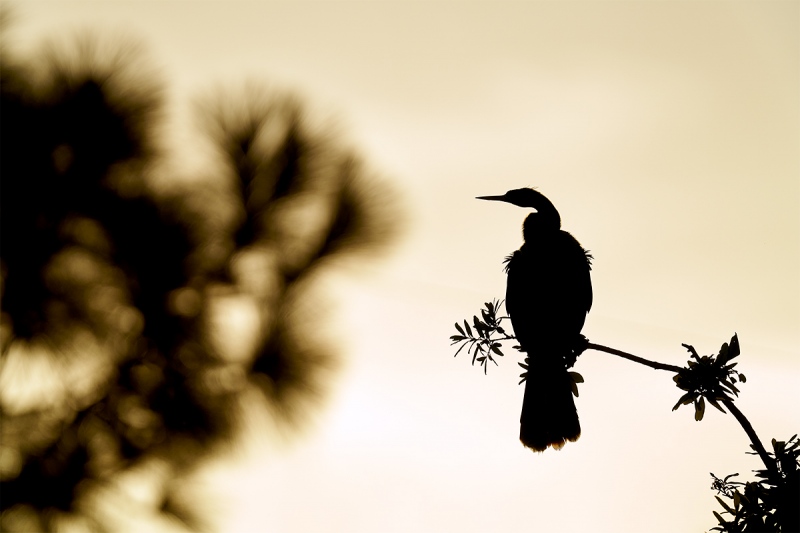
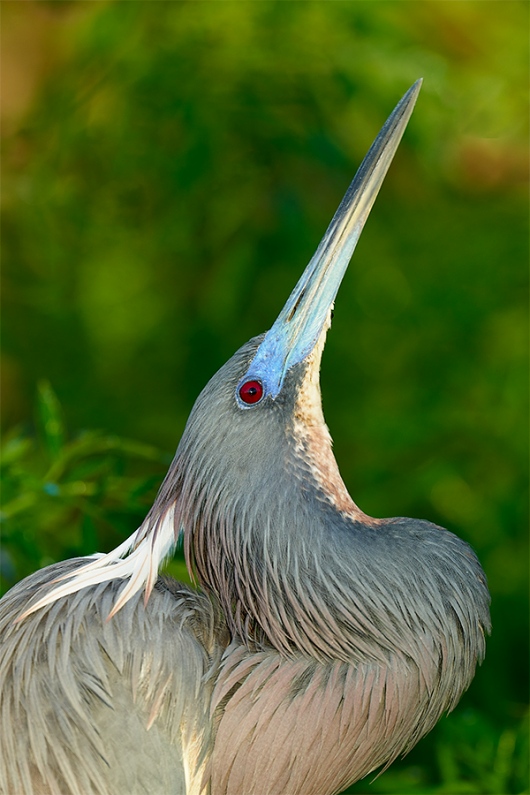
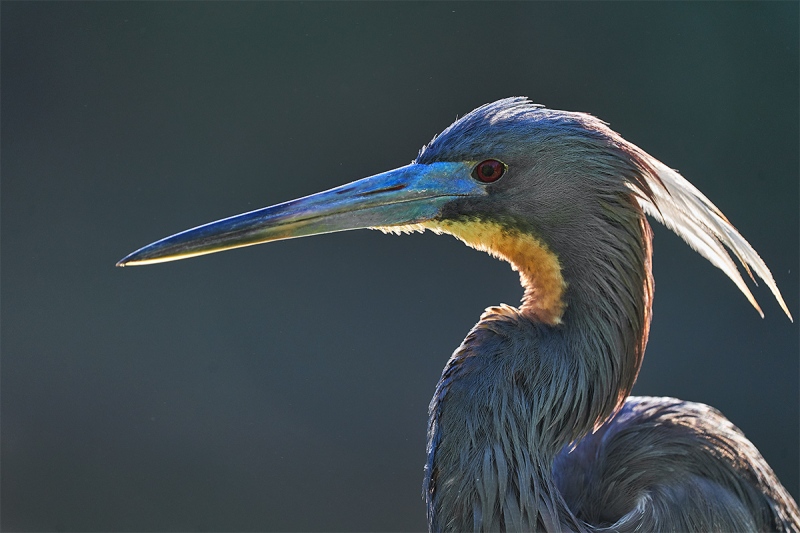
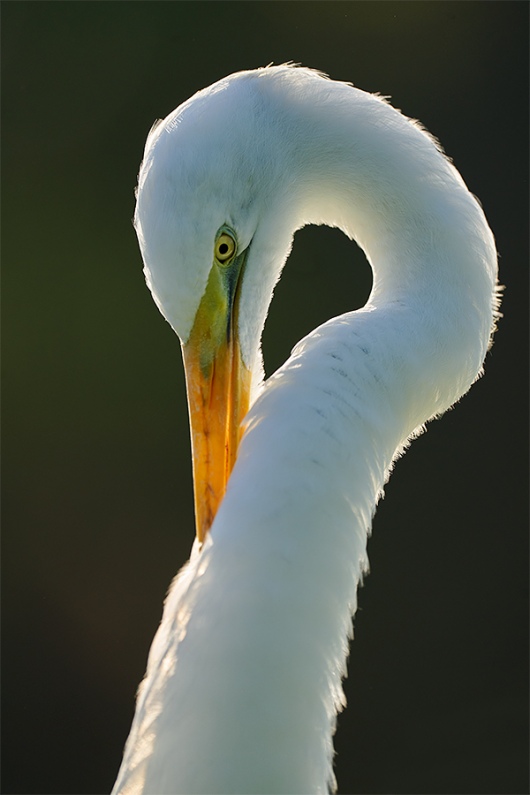
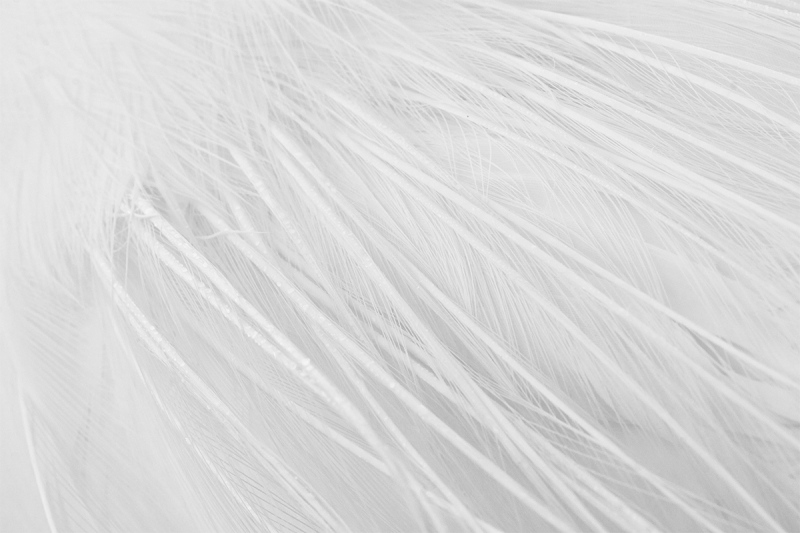
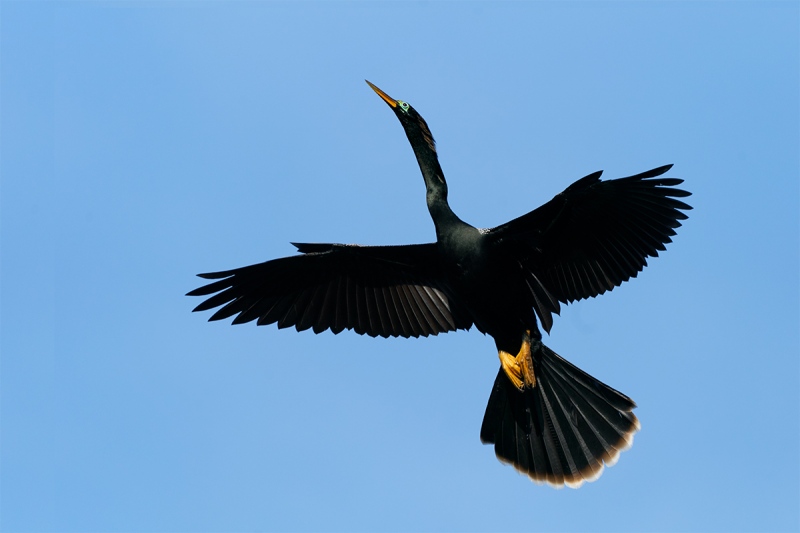
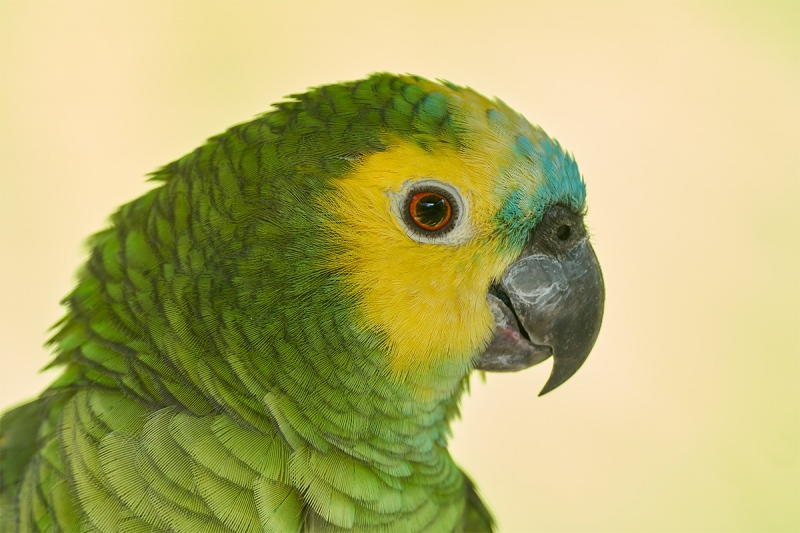
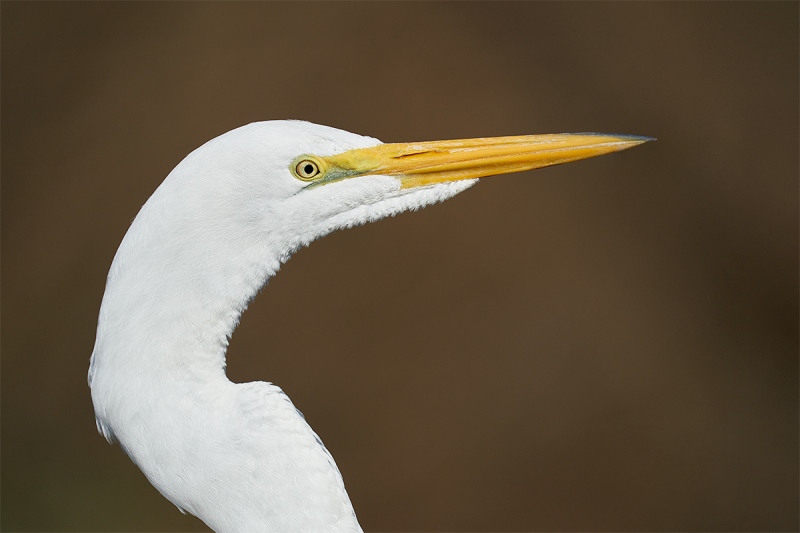
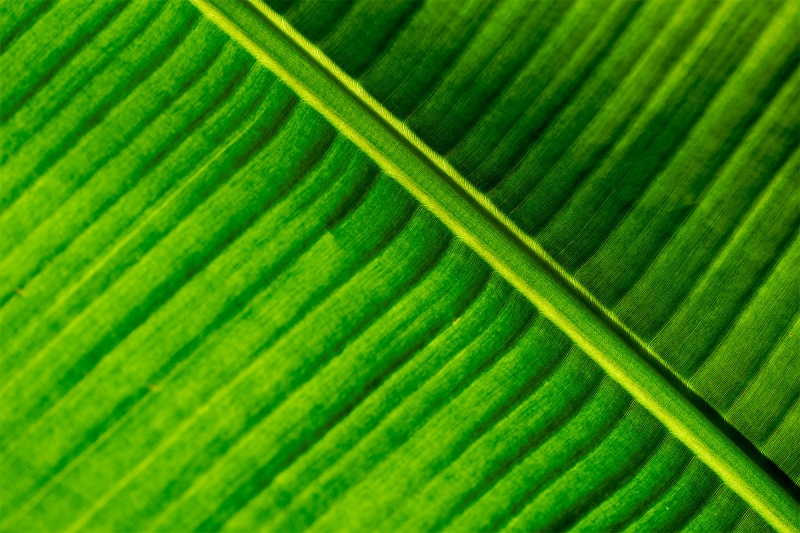
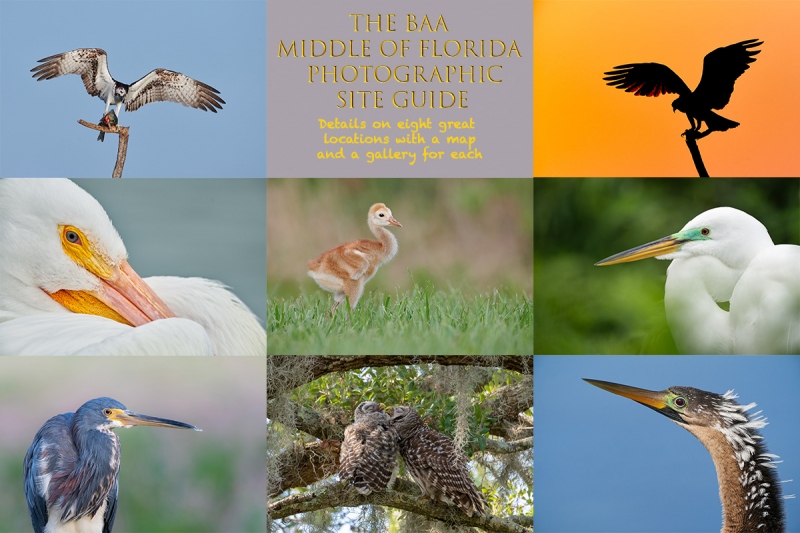













#2 is a clear favorite for me. Like the strong diagonal, the way it fills the box, the eye, the background. The second favorite is kind of a tossup, but I’ll pick #7. Not sure why, but I like the expression and the incredible detail. I like #1 a lot, but the blurred tree doesn’t work for me. I’d prefer either sharp or more blurred.
On #3 I find the brightly lit feather distracting relative to the rather dark face/eye that recedes into the background. #6, while a great form, is a bit dark for my taste. Wait for snow on the ground.
Hey Ed,
You want detail, get a 7r iv. I love the blurred tree in #1 🙂 I could do more blurred …
Agree on 3 & 6.
with love, artie
I LOVE ALL THE PICTURES
LOVE YOUR SISTER ILENE
#2 has a very strong composition to me. My eye comes in at the left bottom corner, follows the neck around to the red eye, and then follows the bill out the upper right corner. The background contrasts nicely with the bird and is not distracting. Chin area might be a little overexposed but I don’t think it detracts from the picture.
#7 is the other one I like. Again, my eye enters from the lower left, follows the green color around the top of the head to the blue color feathers, then follows the beak around to the yellow feathers and then to the eye, nicely spiraling around. Background is pleasing and not distracting. The eye is sharp and captivating. But then, I don’t know much about this stuff.
#1 is too busy. #3 is blah. #4 is nice also due to the lighting.#6 is OK but is just another bird to me. #8 is OK. But #2 and #7 are my favorites.
6 is great. Experience is everything; I would have failed the exposure change.
Because you asked . . .
Strongest? #1 (Anhinga silhouette) because of the composition and the way the differential focus contributes to that, and #3 (Tricolored Heron backlit) because of the way it shows such CHARACTER in the bird.
Weakest? A more difficult choice. The two closeups? (#5 and #9) I guess because I’d like #5 to have more contrast and #9 to have more focus.